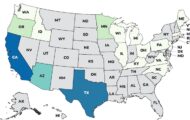Minnesota is starting to test raw cow milk for H5N1 bird flu, according to a press release from the Minnesota Department of of Agriculture (MDA). The testing will start beginning the week of February 24, 2025. This is intended to identify where the virus is present, to monitor trends, and prevent its spread to dairy herds and poultry flocks around the state.

MDA Commissioner Thom Petersen said in a statement, “H5N1 is an emerging disease in dairy cattle, and conducting disease surveillance supports the state’s ability to effectively respond to outbreaks and limit the potential impact on the livestock and poultry industries, as well as on public health.”
The notice stated that there are no concerns about the safety of the public milk supply, since all milk sold in stores to the consumer in Minnesota is pasteurized, which kills viruses and bacteria. Pasteurization effectively eliminates active H5N1 viruses present in milk.
People and pets should not consume unpasteurized raw milk, raw milk cheese, or raw or undercooked meat from animals with suspected or confirmed H5N1 infection. But it’s important to remember that all raw dairy products can and do contain harmful bacteria, viruses, and parasites that cause illness.
There are about 1600 dairy farms in the state. The raw milk from each of those dairies will be collected and tested on a monthly basis. The samples will be sub-tested by industry labs, then sent for H5N1 testing to the Minnesota Veterinary Diagnostic Lab (MVDL) at the University of Minnesota.
If a sample tests positive for the virus, the Minnesota Board of Animal Health will be notified and will collect an additional verification sample to confirm the presence of elf the virus. A farm quarantine and disease investigation will be launched.
Any farm when H5N1 is confirmed will be quarantined for a minimum of 30 days. During that time, no livestock, poultry, cats, manure, waste milk or carcasses can leave the farm without a movement permit from the Board of Animal Health.
Milk from healthy animals can still be sold for pasteurization.
When the bird virus is confirmed, the Minnesota Department of Health will request a list of people on the farm who were exposed to the herd. Those people will be given the option to enroll in human health monitoring. Human cases of H5N1 are rare, and have been occurring around the country. No human cases of H5N1 have been found in Minnesota.
Symptoms of the bird flu in people include red, itchy, watery eyes, cough, sore throat, and a fever. Dr. Ruth Lynfield, state epidemiologist and medical director at the Minnesota Department of Health said in a statement, “Although we understand that people may be concerned about getting sick with H5N1, the risk to the general public remains low at this time. People most at risk are those who have direct contact with infected or potentially infected animals and their environments.”




